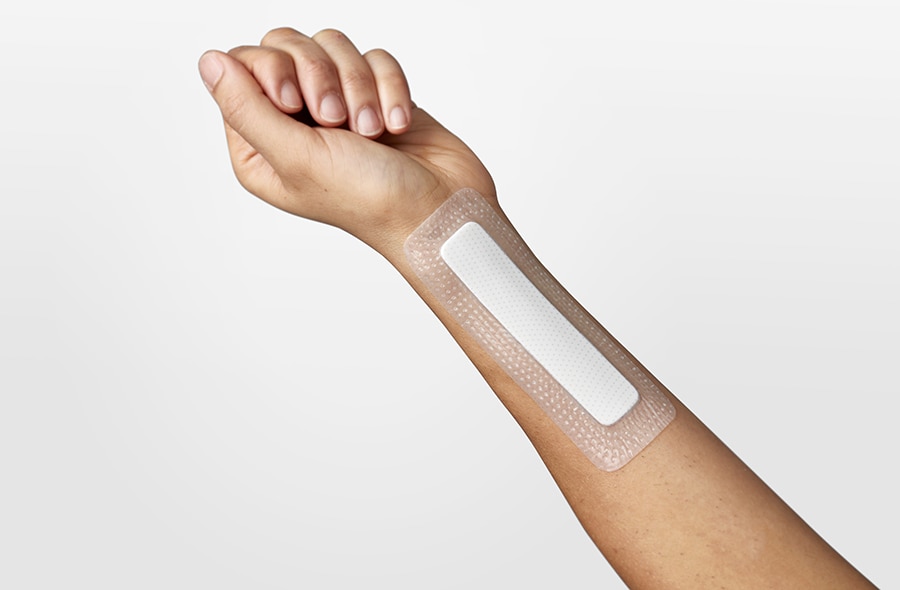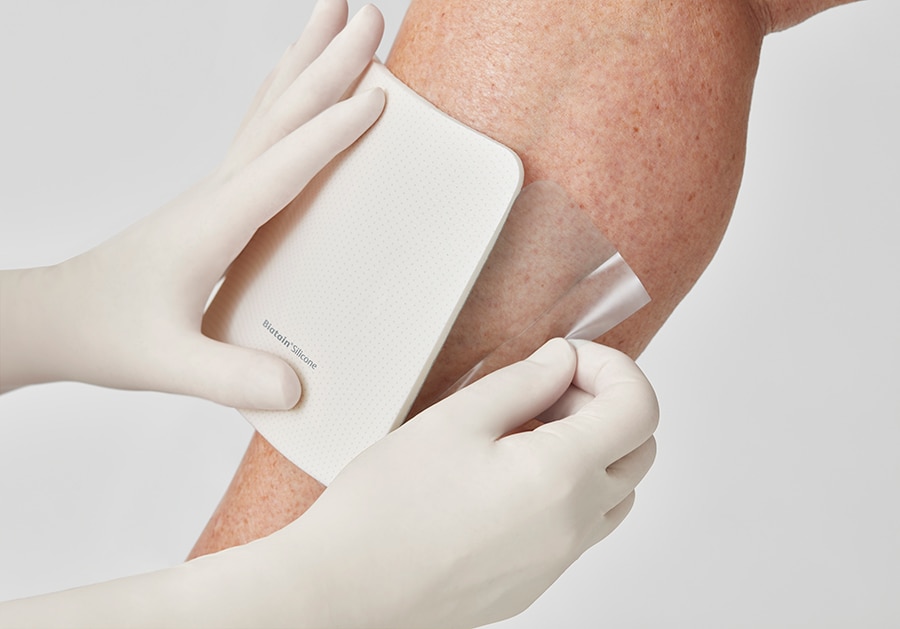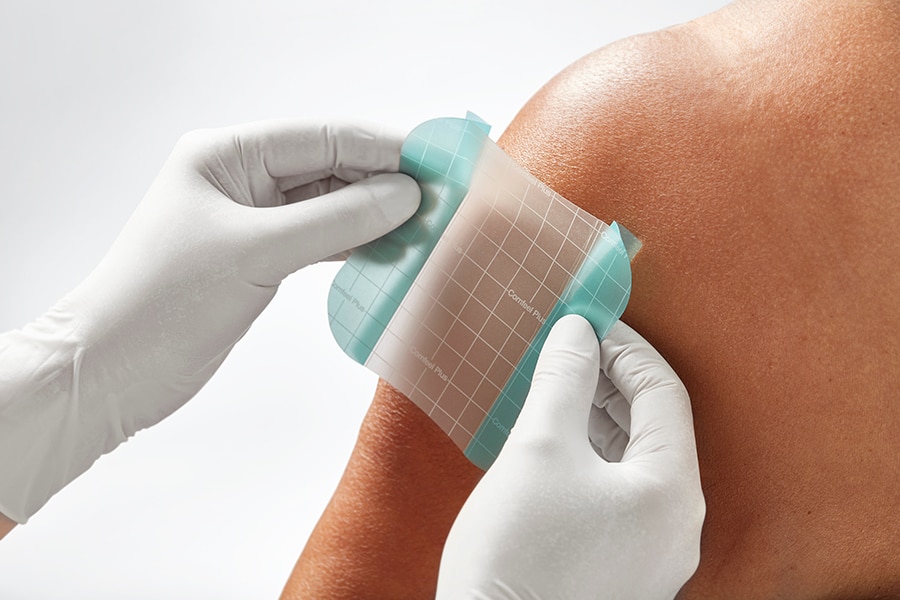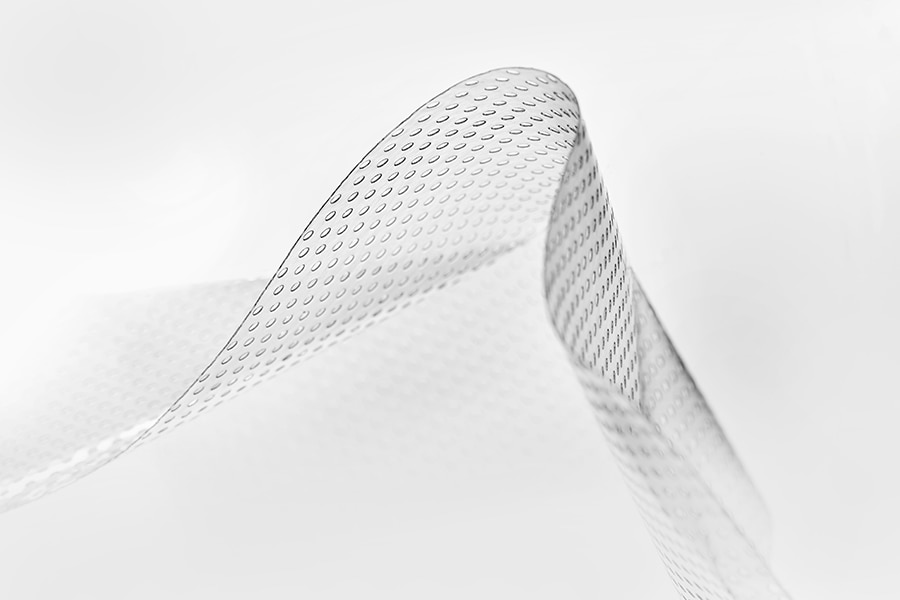What is a silver dressing?
Silver dressings are antimicrobial dressings (see fact box). They are used to prevent or manage infection in a wide range of wounds.
The silver component in the dressing can appear in different forms:
- as a coating on the outside of the dressing;
- within the dressing structure (e.g. as a compound that forms a part of the dressing structure); or
- as a combination of these forms.1
Antimicrobial versus antiseptic
Silver dressings are referred to as both antimicrobial dressings and antiseptic dressings. The term ‘antimicrobial’ refers to any agent that kills microorganisms (e.g. bacteria and fungi) or prevents them from multiplying. According to this definition, antibiotics, disinfectants and antiseptics are all types of antimicrobial treatments. Antiseptics are relatively non-selective agents that kill microorganisms or stop them from multiplying. Patients developing resistance to antiseptics is unknown in wound care. Antiseptics are often referred to as 'topical antimicrobials'. Antibiotics are agents that act selectively against bacteria. They can be administered systemically or topically. Patients developing resistance to antibiotics is an increasing problem.1
How silver dressings work
Healthcare professionals have used silver as an antimicrobial agent for hundreds of years.1 The antimicrobial effect lies in the positively charged silver ions (Ag+). These ions target microorganisms (e.g. bacteria) in three main ways:
- They block the transport of substances in and out of the bacteria cell.
- They stop the bacteria from replicating.
- They destroy energy production.1,2
The result is that bacterial cell membranes burst, destroying the bacteria (see Figure 3).
How silver ions affect bacteria

What happens to the silver?
Silver has a long history of use in wound care and the safety record of the modern silver-containing wound dressings has been excellent. Our bodies have many natural ways of removing excess silver. For example, some is removed as part of the natural tissue turnover process in the epidermis. The liver and kidneys also play a role in removing metals from the body, where the silver is excreted as faeces or urine. Evidence also suggests that the body stores any leftover silver in stable forms that are not bioavailable. The conversion of silver to these stable forms can be considered as forms of detoxification, even though the silver is not physically eliminated from the body.3
When to use a silver dressing
You use silver dressings in three ways:
- to prevent infection in individuals who are considered to be at an increased risk;
- to treat localised wound infection; or
- if you are treating local spreading or systemic wound infection, together with systemic antibiotics.1
You can use silver dressings on acute wounds, such as traumatic or surgical wounds; and chronic wounds.1
If a wound is at risk of infection or re-infection, you might also consider using a silver dressing as a barrier to microorganisms. Examples of these types of wounds could be:
- burns;
- pressure injuries near the anus; or
- wounds in patients with compromised immune systems, poor circulation or unstable diabetes.1
TIP: If you want to learn more about how to identify and treat infection in chronic wounds, go to our general section on wound infection.





